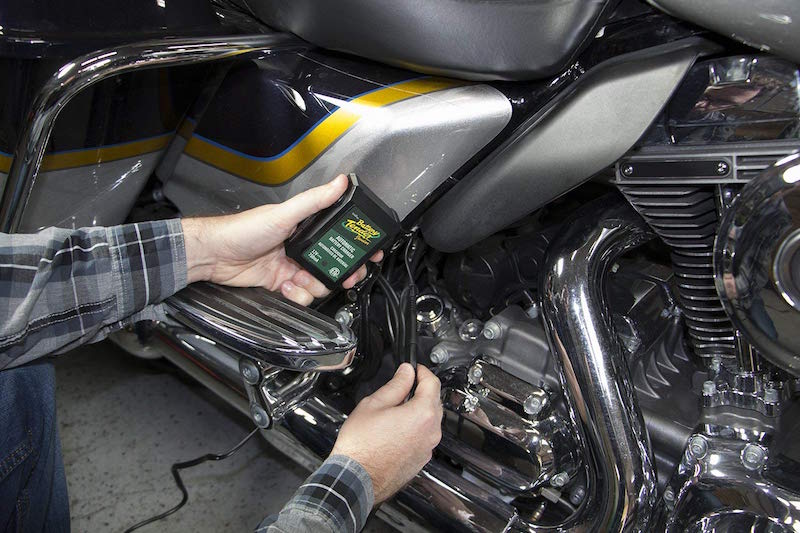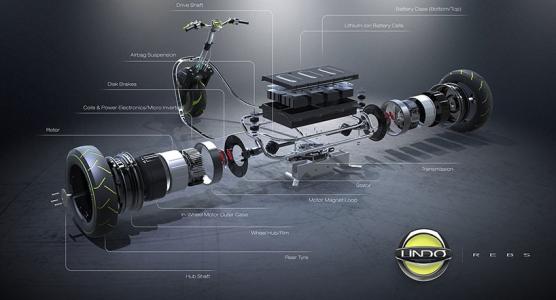How do you charge a lithium motorcycle battery?
Oct 29, 2020 Pageview:14376
Can you charge a lithium motorcycle battery with a regular charger?
Unfortunately, you cannot charge a lithium motorcycle using a regular charger because lithium batteries aren’t similar to other battery technologies like lead-acid. Also, the batteries come in different shapes and sizes depending on the manufacturer. It is therefore advisable to get yourself a specialized lithium battery charger for such a process.
How do you charge a lithium motorcycle battery?
At some point in their journeys, every motorcycle owner would run into a common problem of facing a dead or low battery that lacks enough voltage to start the vehicle. Such situations can highly inconvenience motorcycle riders because starting a motorcycle that has a dead battery tends to be a harder task as compared to a car. However, there are a few ways in which you can charge your lithium motorcycle battery to temporarily give you that boost you need to get to the repair shop or replacement store.

Step 1: Using a battery charger
1.Figure out the kind of battery you own
The first thing to d would be finding out your battery type and keep in mind that motorcycle batteries come in a variety f different shapes and sizes. If you happen to be unsure of the battery type, you can always look it up in the manual or inspect the side of the battery to find the information printed on its sticker.
2.Get a specialized lithium battery charger
Many a time, there would be options of using either trickle, float, or smart chargers for most battery types. These types of chargers tend to work best on lead-acid, Absorbed Glass Mat (AGM), or Gel batteries. They are, however, not suitable for use on any lithium batteries, and thus, you should buy a specialized lithium battery charger.
The various lithium battery versions such as lithium-ion, lithium phosphate, and lithium-iron need special chargers depending on their manufacturer. For more information, you can always check the manual to know which charger you might need for a lithium motorcycle battery.
3.Take out the battery from the motorcycle
Be sure to switch off the bike before extracting the battery and also, never try using this method of charging while the battery is still inside the vehicle. This is because if you charge it while it’s still installed into the bike, you might damage other components of the cell or vehicle at large.
It would be best if you were careful when removing the battery and should, therefore, start by disconnecting the cables from the terminals one at a time. Thereafter, you should loosen any screws holding the battery in place and gently take it out of the bike. As simple as it might sound, this process is a tricky one, and reading the manual for the right way to do it tends to be the best way to go. Not all motorcycles are similar, and depending on the manufacturer, the manual will help you safely extract the cells.
4.Connect the battery charger to the cell
Connect the lithium charger to the terminals of the battery while making sure that they are accurately and firmly connected. Once you’ve confirmed that, you can plug in the charger for it to begin the charging process.
Please note that you will need to closely monitor the charging process to make sure that the chargers don’t overheat and cause any severe damage. Also, it would be wise to carry out the procedure in a well-ventilated place.

5.Check to see if it has charged
Because you’re not using a smart charger for this procedure, you cannot expect the charger to give you the voltage reading automatically. You will, therefore, have to perform a voltage test manually. Disconnect the charger from the terminals of the batteries and plug in the leads into a multimeter and take the reading.
For a lithium motorcycle battery, you will need to turn the multimeter setting to the 20V DC on its scale and take the reading. If the voltage read is around 12.73V or more, then the is fully charged and ready to go. If the reading is between 12.06V and 12.63V, it means that your battery needs to be charged longer. If the reading is anything less than 12.06V, then it might be damaged, or you can try charging it a little longer.
6.Return the battery to the bike
Once you’re done with the charging process, you should unplug the charger and install the battery back into the motorcycle and reattach all the required cables. It would now be safe to turn on the bike and ride.
Step 2: Jump-starting the motorcycle battery
Just like a car, you can also jump-start a lithium motorcycle battery.
1.Find a pair of jumper cables
You can get jumper cables from car drivers as most of them carry a pair of these cables in their trunks. If luck isn’t by your side and you cannot find any, you can always buy a pair at a local hardware store near you.
2.If jump-starting using a car, turn it off
Car batteries have a much larger capacity as compared to motorcycles, and the bikes don’t require all this energy. As such, when you’re jump-starting your bike using a car, it is recommended that you leave the car off.
3.If jump-starting using another motorcycle, turn it on
Be sure to start the healthy bike first, followed by the dead one when jump-starting using another bike.
4.Connect the batteries using the cables
Accurately link the terminals of the cells using the jumper cable while making sure that the clamps don’t come into contact.
5.Turn on the motorcycle
Start the motorcycle and leave it on for a few minutes for the engine to warm up.
6.Disconnect the cables
Disconnect the cables safely without bringing the clamps into contact and leave the bike running until you can take it to the repair workshop.
Can you charge your lithium motorcycle battery overnight?
Absolutely not. When charging your motorcycle, you need to be present to monitor the process which also, shouldn’t take too long. If you were to leave the battery charging overnight, it might overcharge and, in the process, overheat thus, paving the way to a series of hazardous events such as thermal runaways, fires, and even explosions.
Never leave your battery charging overnight!
Conclusion
When you notice that your lithium motorcycle charger starts requiring charging or jump-starting due to regular failure, then it is advisable to take your bike to the mechanic. The battery could be damaged or due for replacement. Either way, you should never ignore a failing battery because it could be dangerous to ride along with the flow.
- Prev Article: Max Temperature For Lithium-Ion Battery- Temperature Range And Effect
- Next Article: Lithium battery for motorhome-pros and cons
Leave Message
Hottest Categories
-
Hottest Industry News
-
Latest Industry News










